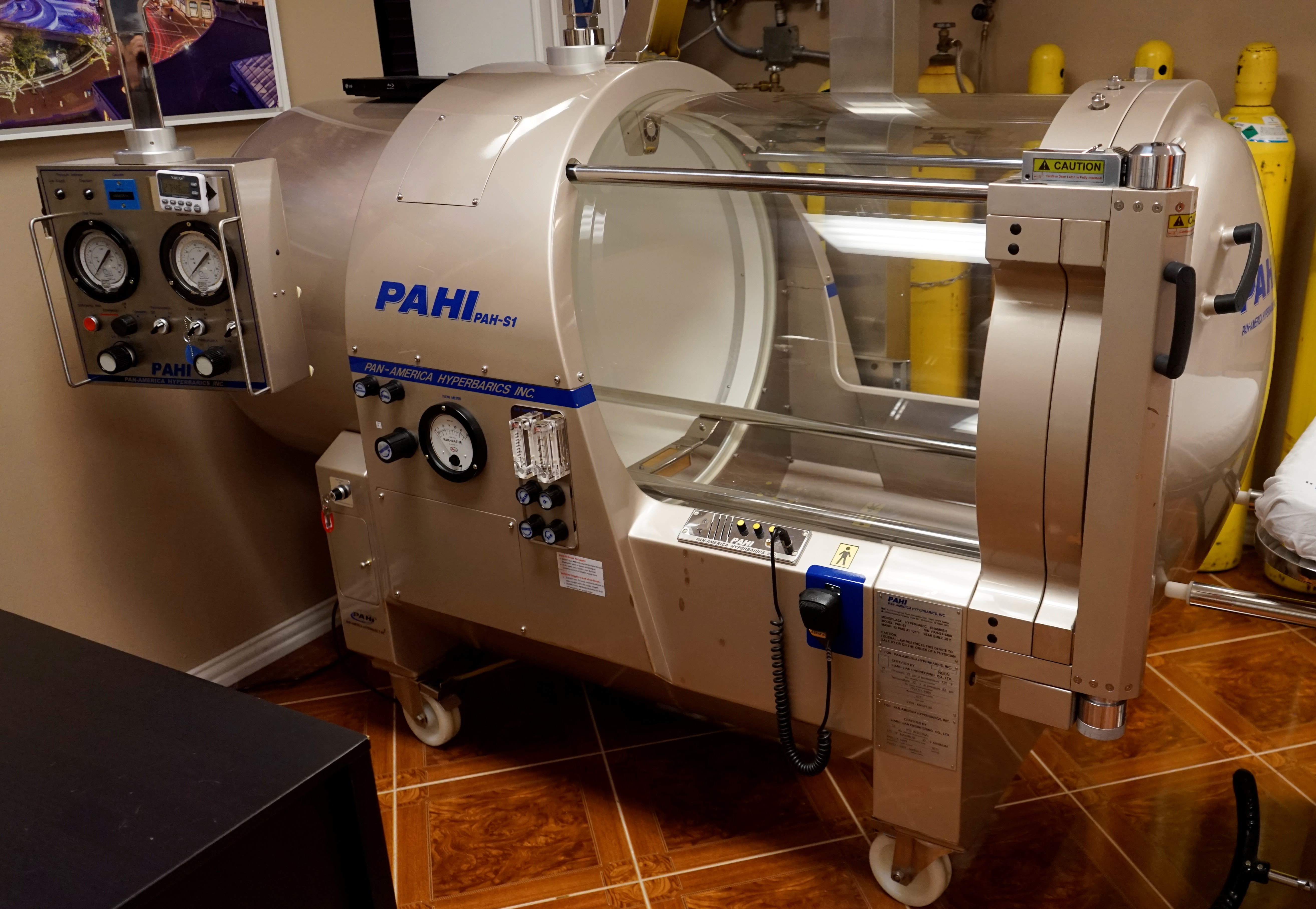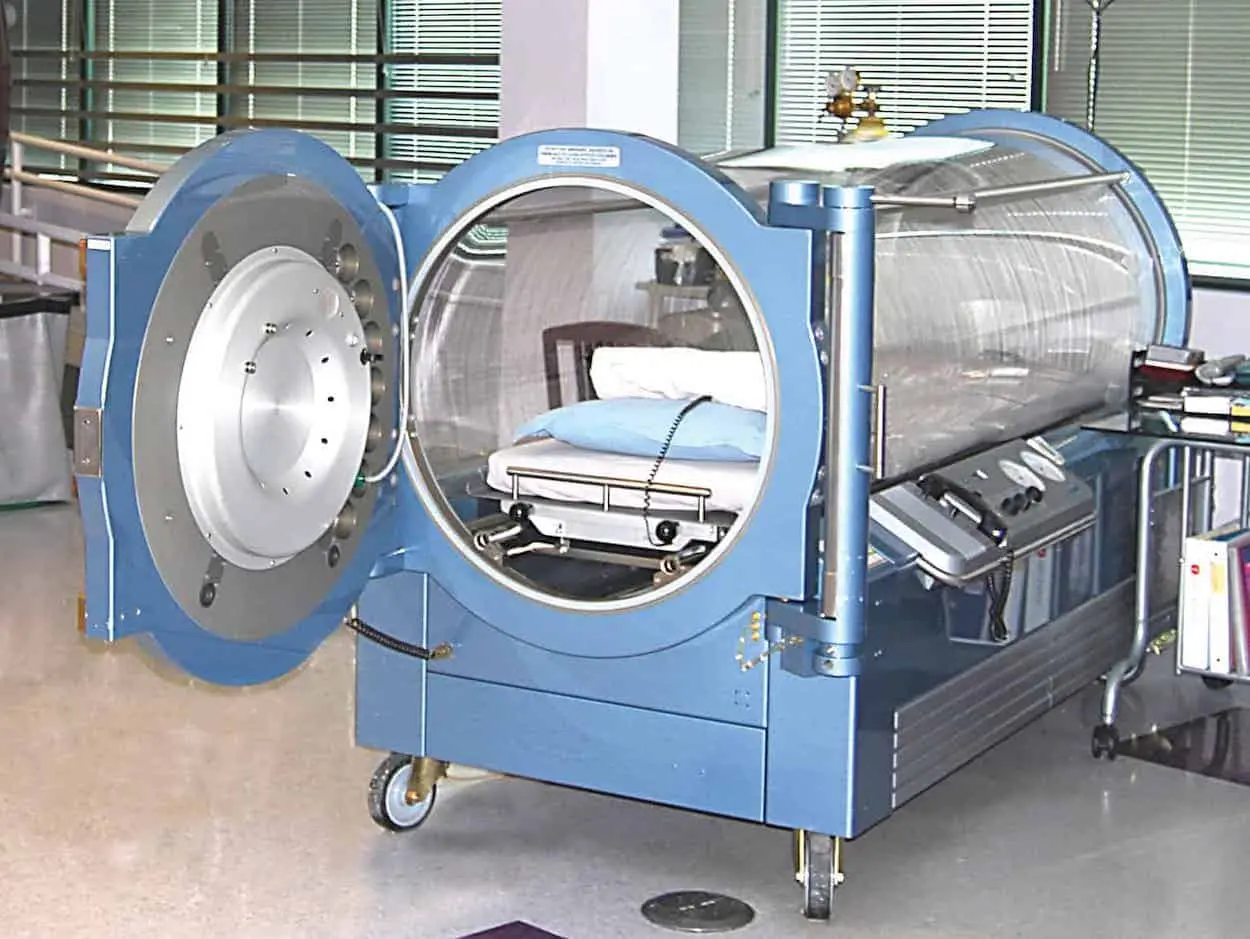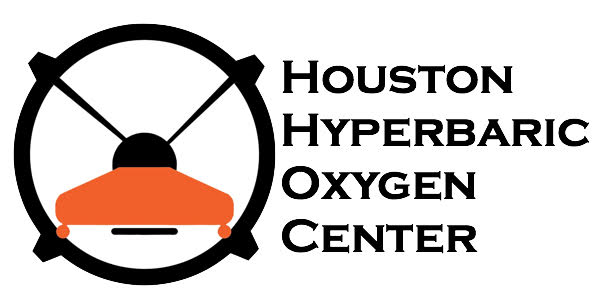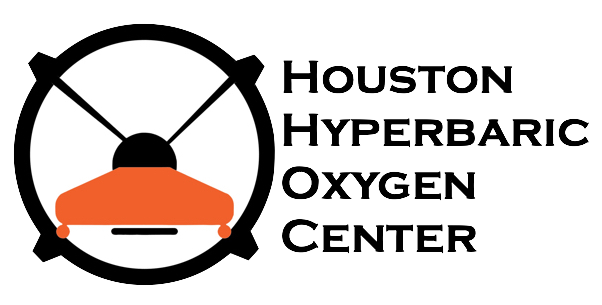What is Hyperbaric Oxygen Therapy?



Hyperbaric Oxygen Therapy or “HBOT” is a prescribed treatment approved by the FDA and AMA in which a patient breathes 100% medical grade oxygen while under increased pressure. During treatment the patient can relax by watching a movie, listening to music or just rest. It is a non-invasive, safe method of administering pure oxygen at greater than atmospheric pressure to a patient in order to improve or correct certain conditions or to increase recovery speed.
How does HBOT work and what are the benefits?
Many illnesses and injuries fail to heal due to inadequate oxygen levels. Reduced blood flow, swelling, and edema or inflammation create an environment that lacks the ability to heal from lack of oxygen reaching the damaged tissue.
Providing oxygen in a pressurized chamber allows the delivery of 10-15 times more oxygen than if it was delivered at sea level or at normal atmospheric pressure. HBOT allows more oxygen into the body under pressure, oxygen dissolves into all of the body’s fluids, including the plasma, the lymphatic fluids, and the cerebrospinal fluids surrounding the brain and spinal cord. These fluids can carry the extra oxygen to areas where circulation is poor or blocked, either by trickling passed the blockages or by seeping into the affected area. This extra oxygen helps in the healing process and enhances the white blood cells ability to fight infection. It can promote the development of new capillaries, the tiny blood vessels that connect arteries to veins. It also helps the body build new connective tissue.
Effects of HBOT:
- Suppressed alpha-toxin production
- Reduction of edema
- Angiogenesis
- Enhanced Leukocyte-dependent killing
- Decreased adhesion of white cells
- Restoration of fibroblast growth
- Diffusion of inert gas from bubbles
- Vasoconstriction of normal vessels
- Increased production of superoxide dismutase
- Preservation of ATP in membranes
- Suppression of immune responses
- Enhanced osteoclast activity
- Decreased pulmonary function demand
- Nervous pathology
- Reduced lenticular flexibility
- Reduces Swelling
- Improves Range of Motion
- Increases the Production of Collagen
- Increases Growth of Cells that form Reparative Tissue (Fibroblastic Proliferation)
- Supports Scar Tissue Rehabilitation
- Promotes Greater Tissue Strength
- Increases Oxygen Levels in Tissues (Hyperoxia)
- Increases Oxygen Perfusion Area Around Wounds
- Stimulates New Capillary Growth
- Improves Bone Regeneration for Faster Recovery
- Helps Prevent Infection
- Increases White Blood Cell Production
- Enhances Ability of White Blood Cells to Remove Bacteria and Debris
- Potentiates the use of Antibiotics
- Destroys Harmful Bacteria
- Reduces Surgery Complications

